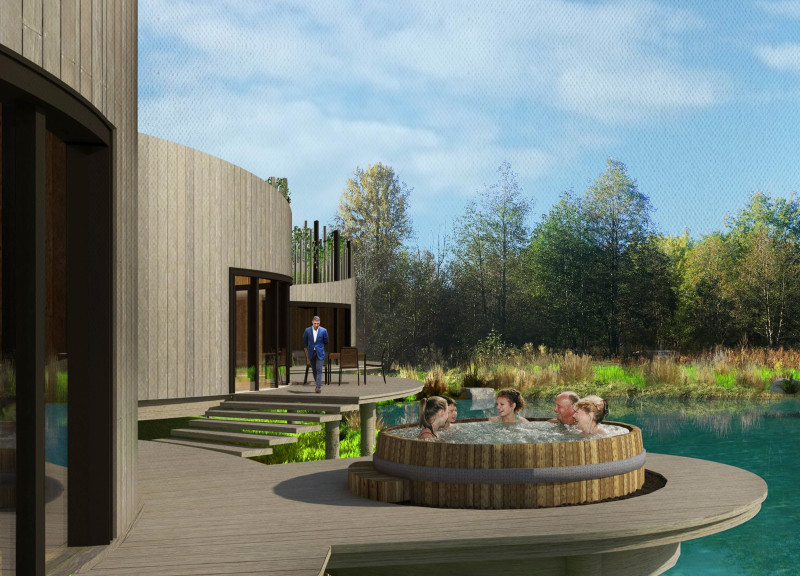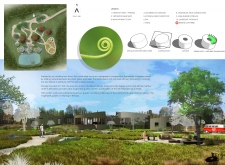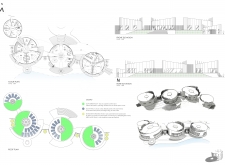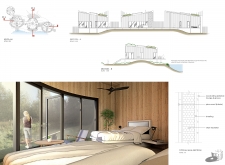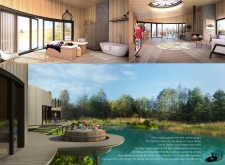5 key facts about this project
At its core, the project represents a vision of enhanced well-being and environmental consciousness, seeking to promote a lifestyle that respects nature. The main function of the facility is to provide a tranquil getaway for individuals or families, aimed at fostering relaxation and reconnection with oneself and nature. Each element within the structure has been designed with intention, highlighting the connection between the indoor experiences and outdoor landscapes.
The layout of the project features several interconnected circular buildings, strategically placed to minimize land impact and support natural drainage. These buildings stand on raised stilts, allowing the land to breathe and ensuring the sustainability of the ecosystem. The elevation not only reduces the footprint but also enhances views of the surrounding greenery. The sloping roofs are adorned with vegetation, promoting biodiversity while contributing to thermal regulation within the rooms.
Materials play a critical role in the architecture of this project, with a clear focus on sustainability and minimal environmental impact. The exterior showcases wood siding, selected not only for its aesthetic appeal but also for its natural insulation properties. Inside, warm pine wood envelops the spaces, creating an atmosphere of comfort and tranquility. The use of straw for insulation reflects an innovative approach aimed at reducing the building's carbon footprint while ensuring occupant comfort through temperature regulation. The careful selection of glass for large windows is crucial, as it promotes natural light infiltration and provides unobstructed views of the meticulously landscaped grounds.
Unique aspects of this architectural design include its integration of community spaces, such as playgrounds and areas designated for group activities. These spaces encourage social interaction among guests, fostering a sense of community while engaging with the surrounding nature. The design also prioritizes water management through self-sustaining systems like grey water tanks and bioswales. This reflects a broader understanding of ecological design principles, where architecture responds to environmental challenges with practical solutions.
The ventilation strategy employed in the project makes optimal use of natural airflow, allowing occupants to benefit from a fresh, healthy indoor environment. By situating openings strategically, the architecture takes advantage of prevailing winds, minimizing reliance on mechanical heating and cooling systems. This is a central tenet of sustainable architecture, balancing comfort and environmental responsibility.
The project not only stands out for its innovative design approaches but also for its emphasis on creating a nurturing experience for its visitors. It fosters engagement with nature while providing spaces that are conducive to relaxation, reflection, and social gathering. Each circular component of the design contributes to this overarching narrative of harmony, encapsulating a philosophy that values the interplay between the built environment and its natural surroundings.
For more insights into this architectural project, it is recommended to explore its architectural plans and sections, which reveal further details on the spatial organization and functionality. Additionally, examining the architectural designs and ideas can provide a more in-depth understanding of the innovative concepts that have shaped this project. The careful consideration of both aesthetic and ecological factors in this architecture promises a rich experience for those who engage with it.


